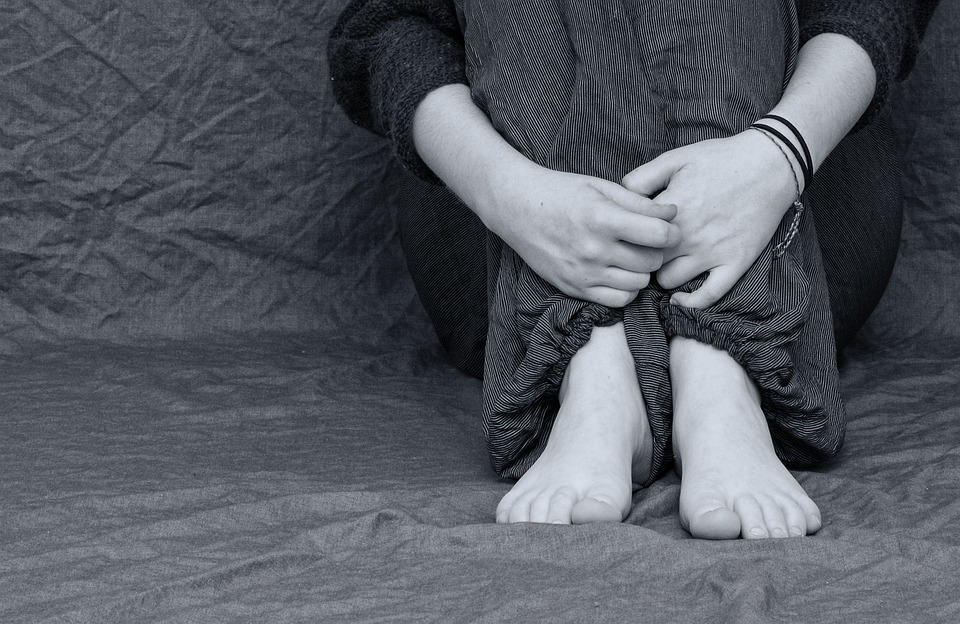Today, students can be assigned to write about topics they may not find particularly interesting or good at. For example, freshman students may find it pretty challenging to find strong arguments for euthanasia essay, and thus, they will require ideas from experienced people. The number of such fields is really enormous. Thus, when you are assigned a tricky topic, you are welcome to browse our ideas for what to discuss in your writing, from ”Doll’s House” essay to sex education topics for students, you can find anything you need.
Another discipline that can be challenging is literature because college learners are not always interested in the works they have to handle. First, they have to read a book they do not find engaging, and then, they have to discuss it. Well, this can make the writing process feel overwhelming, dull, or even frustrating. Of course, it’s pretty easy to lose motivation when the subject doesn’t spark curiosity. However, choosing a hooking and thought-provoking angle can change everything. Thus, our writing experts constantly work to help you frame issues in a way that resonates with your own ideas or challenges common beliefs in order to make even the most uninspiring topic into a meaningful piece.
When F. M. Dostoevsky was in penal servitude, he faced criminals – thieves and murderers – who influenced him while writing “Crime and Punishment.” The main character of “Crime and Punishment,” Rodion Raskolnikov, killed an old woman, not only because of his poverty, but also for ideological reasons. This is one of the main ideas of the novel – and is why it is one of the most popular “Crime and Punishment” paper topics to assign.
You can use paper topics for “Crime and Punishment,” prepared by our essay writing service, in accordance with the writing rules if you want to complete a high-quality essay. If your aim is to get a high grade, then select one of our topics and write a paper on it. They are divided into categories according to the type of essay so that you can make your choice easier.
Table of contents
Persuasive “Crime and Punishment” essay topics
-
Why Raskolnikov’s Murder Can Be Viewed as a Morally Justifiable Act Within His Philosophy
-
How Extreme Poverty Becomes the Primary Motivator Behind Raskolnikov’s Descent Into Crime
-
The Idea That Suffering Is Essential for Redemption in Dostoevsky’s Moral Universe
-
Why Sonya Represents the Moral Center and Embodiment of True Justice in the Novel
-
Raskolnikov’s Mental Instability as a Key Factor in Understanding His Criminal Actions
-
How Dostoevsky Elevates Religious Justice Above Legal Systems in Crime and Punishment
-
Why the Belief in Intellectual Superiority Cannot Ethically Justify Breaking the Law
-
How Raskolnikov’s Case Would Be Treated in a Modern Legal and Psychological Context
-
Dunya as a Quiet Force of Strength, Morality, and Resistance in a Male-Dominated World
-
Why Personal Confession Becomes a More Powerful Punishment Than Prison in the Novel
Expository “Crime and Punishment” essay topics
- In “Crime and Punishment,” Sonya, Svidrigailov, and Lebezyatnikov represent the three sides of Raskolnikov. How? Which sides? Explain.
- How does the novel make sense of the themes of crime and punishment? Is justice something that is achievable, and if so, how? How does the story define justice? What is the relationship between law enforcement and justice?
- Why did Raskolnikov kill the pawnbroker?
- How is the idea of the superhuman depicted in the novel? Why did Raskolnikov fail to live up to his own expectations?
- Which place does the city take in the plot? Does it have any importance to the development of Raskolnikov’s state of mind?
- What are the reasons and motivations for murder? What are the changes in the mood toward murder according to the book “Crime and Punishment” by Fyodor Dostoevsky?
- Explain the keen understanding of the human psyche according to “Crime and Punishment.”
- Choose a character from “Crime and Punishment” who deceives others. Then, explain that character’s deception and discuss how the deception contributes to the meaning of the novel as a whole.
- Explain the role of nihilism in relation to Raskolnikov in “Crime and Punishment.”
- Choose and explain one of the sociological explanations for punishment covered in chapter 15 (durkheimian, Marxian, foucauldian, or feminist) to frame the decision of the ideology.
- Explain why Raskolnikov is so opposed to Dounia’s marriage to Luzhin and describe Luzhin’s personality; explain why he’s so revolting.
- Describe Razumihin, and explain his relationship to Raskolnikov, including how it develops throughout the novel.
- Describe Dounia, and explain the way that her character develops and changes throughout the novel.
- Describe Detective Porfiry Petrovitch, and explain what he represents to Raskolnikov.
- Explain contradicting behaviors apparent in Raskolnikov.
Compare and contrast essay topics
- Compare the common underlying themes in “Crime and Punishment” and “Invisible Man.”
- Compare themes found in both “Hamlet” and “Crime and Punishment.”
- Compare “Crime and Punishment” during the 1800s and Mary Shelley’s “Frankenstein.”
- Compare and contrast the way that Homer and Dostoevsky depict the topic of justice. How do the two texts define justice? How are vengeance, punishment, atonement, mercy, repentance, and guilt related to, or a part of, justice in their stories? Who seems to be responsible for carrying out justice in these texts? What role, if any, does violence seem to play in the implementation of justice?
- Compare women in “Crime and Punishment,” “Pride and Prejudice,” and Keat’s “The Eve of Saint Agnes.”
- Compare France in “Tartuffe,” rural England in “The Misanthrope,” Saint Petersburg in “Crime and Punishment,” and the rural South in “The Displaced Person.”
- Compare Raskolnikov and Razumikhin according to their descriptions of each other.
- Compare common themes in “The Brothers Karamazov” and “Crime and Punishment.”
- Compare “Wuthering Heights” and “Crime and Punishment.”
- Compare irony in “A Doll’s House” and “Crime and Punishment.”
- Compare irrationality in Shakespeare’s “Macbeth” and Dostoevsky’s “Crime and Punishment.”
- Compare “The Stranger” and “Crime and Punishment.”
- Compare “Crime and Punishment” with Dostoevsky’s notes.
- Compare “Othello” and “Crime and Punishment.”
- Compare Christianity in “Crime and Punishment” and to-date literature works.
Discussion “Crime and Punishment” essay topics
- Discuss how Dostoevsky creates suspense.
- Discuss class distinction throughout the novel.
- Discuss words and phrases that Raskolnikov uses to describe Alyona Ivanovna. Explain why Raskolnikov places his focus on her.
- Discuss Raskolnikov’s philosophy of crime and his confession to Sonia.
- Discuss the socialist view of crime, as presented by Razumihin.
- Discuss as many moments in the novel as you can find where existentialist philosophy is expounded.
- Discuss the treatment of women in the novel (treatment of women by men). Consider Dounia, Sonia, Katerina Ivanovna, Lizaveta, Marfa Petrovna, Svidrigailov’s betrothed, and the women witnessed in the streets.
- Discuss the function of the side story of Marmeladov. (How does his story contribute to a theme?)
- What is the point of Svidrigailov?
- Why is Svidrigailov so vile? (Defend him if you don’t believe that he is).
- Discuss the significance of Svidrigailov’s dream.
- Raskolnikov muses, “But why are they so fond of me if I don’t deserve it? Oh, if only I were alone and no one loved me and I too had never loved anyone! Nothing of all this would have happened.” Discuss what he means. Then, explain how this comment relates to a greater theme.
- Discuss the presentation of God and religion throughout the novel, and explain how the epilogue contributes to this presentation. Also, explain how the Biblical story of Lazarus relates to Raskolnikov.
- Sonia does not meet Raskolnikov until after he has committed his crime. Discuss why she never leaves his side, and what she represents to Raskolnikov.
- What ultimately do you think is Raskolnikov’s crime? What about his punishment?
Analytical “Crime and Punishment” essay topics
- Through which characters and how is the theme of alienation from society revealed in “Crime and Punishment”?
- Analyze characterization and theme in “Crime and Punishment.”
- How does the lens with which you read change the interpretation?
- The meaning of some literary works is often enhanced by the sustained allusion to myths, another literary work, or the Bible. Find such a sustained allusion (or two) in “Crime and Punishment.” Analyze the allusion(s) and how it (they) contributes to the work’s theme.
- What concepts of law are prominent in “Crime and Punishment”? What new legal techniques and psychological methods does Porfiry employ?
- Analyze the importance of the city to the plot of “Crime and Punishment.”
- What impact do the descriptions of different apartments have on our understanding of the characters?
- Analyze the usage of foreshadowing in “Crime and Punishment.”
- What role does Lebezyatnikov play in “Crime and Punishment”?
- Analyze the theme development of religious redemption over the course of “Crime and Punishment.”
- Analyze the role of God and religion in the novel.
- Analyze the rationalization of crime in “Crime and Punishment.”
- Analyze retributive justice in “Crime and Punishment.”
- Analyze nature in the novel.
- Analyze guilt in the novel.
Choosing one of the presented “Crime and Punishment” topics for essays will be a wise decision. Using them, you can write a solid essay with proper arguments, and our essay grade calculator will help you evaluate your project and predict how your professor will assess it.
Finally, if you don’t know how to work with different essay formats, check out the samples and guides presented on our blog. And of course, you are welcome to use our service as an adviser if you are struggling with college writing.









